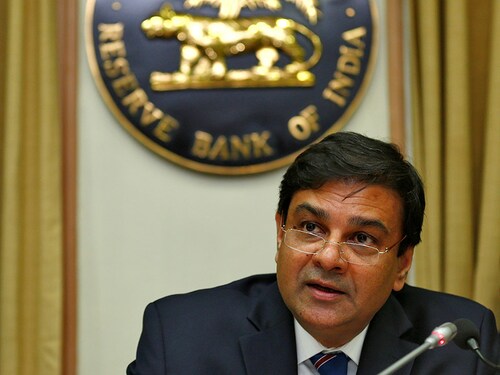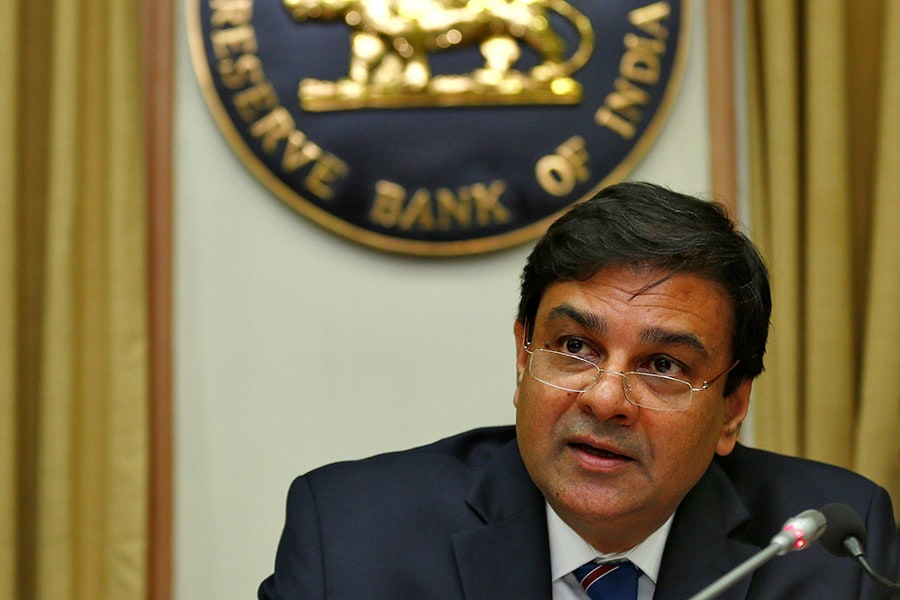RBI holds repo rate; wants to watch a bit more before deciding on future action
Incremental data on demand and price movements will determine the central bank's future stance


 Urjit Patel, Governor, RBI
Urjit Patel, Governor, RBI
Image: Danish Siddiqui/ ReutersThe Reserve bank of India governor Urjit Patel does not like surprises and neither does he surprise (enough). In those terms, as a prudent central banker he, on Tuesday, outlined the risks which are yet to play out and could impact India’s economy in coming months. Factors like the progress of the monsoon this year, consumer inflation, input and wage costs and the rollout of the Goods and Services Tax (GST) are all those factors where there are a lot of ‘moving pieces’ which need to be closely watched before the bank decides on the next policy action.
Also when inflation retreated in April, the bank has noted that it is still uncertain if this trend will sustain. The bank, on Wednesday, also noted that the prices of pulses are clearly reeling under the impact of a supply glut caused by record output and imports.
Incremental data on demand and price movements will determine the bank’s future stance. Hence it was more prudent that the Monetary Policy Committee (MPC), which decides on rate action, decided to keep the repo – the rate at which the central bank lends to commercial banks – unchanged at 6.25 percent. This was a five to one vote in favour of maintaining a status quo on policy rates.
The MPC also probably feels then that it will be better placed in about seven weeks’ time to decide on inflation trends. Thus it will be in a “wait and watch” mode. One has to understand also that the RBI is in a neutral rather than an accommodative stance, hence it will be more careful before deciding on policy action.
It is then also not very clear what policy action could emerge on August 1-2, when the MPC meets next to decide on policy action. Inflation trajectory will be a little clearer and the bank expects inflation to drop further, thus revising its projection lower, in Wednesday’s policy.
“The April reading has imparted considerable uncertainty to the evolving inflation trajectory, especially for the near months. If the configurations evident in April are sustained, then absent policy interventions, headline inflation is projected in the range of 2.0 to 3.5 percent (from 4.5 percent earlier) in the first half of the year and 3.5 to 4.5 per cent in the second half [FY18]” the bank said in its policy statement released on its website.
“At the current juncture, global political and financial risks materialising into imported inflation and the disbursement of allowances under the 7th central pay commission’s award are upside risks,” the statement adds.
Thus, we can also assume that when all the risk factors start to play out, the MPC will be better placed to take a decision. But a case for a rate cut in August 2017 is still divided. Sonal Varma of Nomura expects the RBI to leave rates unchanged through March 2018, which would then be followed by a cumulative 50 basis points of rate hikes starting April 2018. Shubhada Rao, chief economist with Yes Bank however expects the bank to lower interest rates by 25 basis points in August itself. This would be on the basis that inflation would likely fall into the band it now forecasts it to be in.
Dhananjay Sinha, head of research, economist and strategist at Emkay Global Financial Services Limited says: “Notwithstanding the downwards revision in the inflation projections, RBI believes that the recent downside surprises in inflation were transitory in nature. Recent decline in CPI inflation to 3 percent is attributable to factors such as lingering demonetization impact, especially on vegetable prices, supply glut in pulses due to bumper production & imports and decline in global commodity prices.”
“But there are several counterbalancing factors that could resuscitate inflationary pressures such as strengthening in consumption demand, rising pace of rural wage growth and higher government spending including through lager scale farm loan waivers and 7th pay commission. Overall, RBI’s outlook on growth is constructive, flowing from better domestic demand and upturn in global growth,” Sinha said, in a note to clients.
The RBI has marginally revised the growth forecast for India marginally downwards to 7.3 percent for FY18, from an earlier 7.4 percent. This is due to global geo-political risks and rising input costs and wage pressures which could be a drag on profitability of companies and impact overall growth.
The economy, as measured by gross domestic product (GDP), grew by just 6.1 percent in the fourth quarter of 2016-17 dragging down the full year’s growth to 7.1 percent, almost a 100 basis point fall from previous fiscal’s 8 percent. The slowdown has been sharp as the GDP growth was as high as 7.9 percent even in the first quarter of 2016-17.
First Published: Jun 07, 2017, 18:07
Subscribe Now